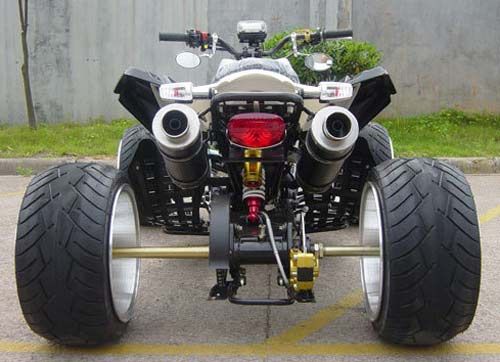Table of Contents
If you have ever been to the dunes, at a track, or really anywhere that ATV enthusiasts frequent then you have probably heard the great debate about 2 strokes vs 4 strokes. This debate is almost as heated as the “Ford Vs Chevy” debate that has been raging for many years. You have enthusiasts on either side of the fence that will fiercely defend their engine of choice no matter what is said and no one can change their minds.
2 stroke engines create more torque at higher RPM and they require premixing of oil and fuel. 4 stroke engines are heavier and can weigh up to 50% more than a 2 stroke engine and create a higher torque at a lower RPM.
If you want to know which type of engine is better in an ATV then you need to pay attention to the good and the not so good qualities. Each engine has its own reasons why they could be considered “better” than the other but that is really up to you to decide based on your needs and what you want out of your next ride.
Combustion is the process of releasing energy from a fuel and air mixture that has been ignited to cause an explosion. All ATVs have combustion engines (with the exception of newer electric engines that are becoming more and more popular). In a combustion engine, ignition and combustion occurs inside the engine when the fuel and air are mixed together and the spark plugs start the ignition of that mixture. Then the engine converts the energy from the combustion into power from the engine. The ATVs engine has a fixed cylinder and a moving piston. The combustion gases expand and push the piston down causing the crankshaft to rotate. The crankshaft turns and engages several series of gears and that combustion power is then transferred to the wheels to provide acceleration.
A stroke in an engine is a phase of the engine’s cycle in which the piston travels from the top of the cylinder to the bottom of the cylinder, or from bottom to top.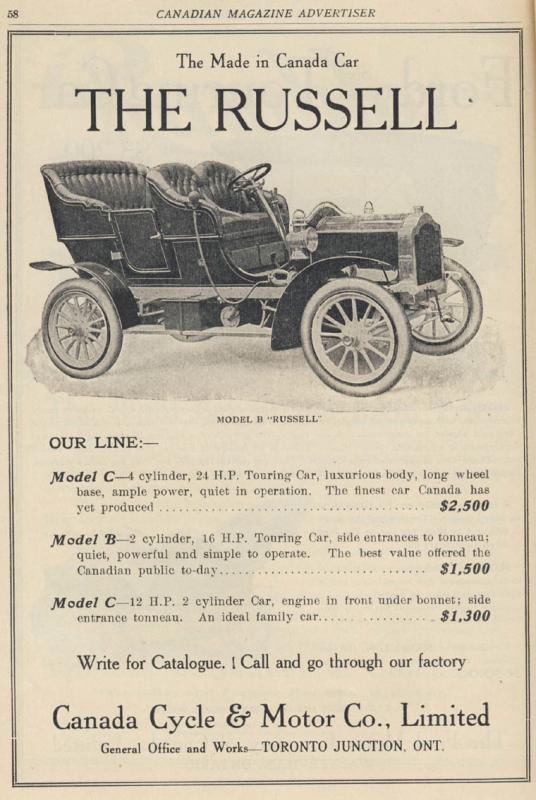 In a 4 stroke engine, 4 piston strokes are needed to complete a cycle. This cycle includes four distinct processes. Let’s explore these a bit more to get a better understanding of what is really going on inside our engines.
In a 4 stroke engine, 4 piston strokes are needed to complete a cycle. This cycle includes four distinct processes. Let’s explore these a bit more to get a better understanding of what is really going on inside our engines.
When you turn on the key and hit the start button, it sends a signal to the engine engaging the starter. The piston then moves down into the cylinder and the intake valve opens pulling in air and fuel. Amazon has a large selection of parts for many UTVs including intake parts..
Once the piston has reached the bottom of the cylinder and is full of fuel and air it shoots back up the cylinder, compressing the fuel air mixture inside the cylinder.
The spark plugs then ignite the fuel air mixture causing combustion. This combustion causes a small explosion in which the gasses expand at a rapid rate and push the piston downward.
Finally, the piston moves back up the cylinder and the exhaust valve opens.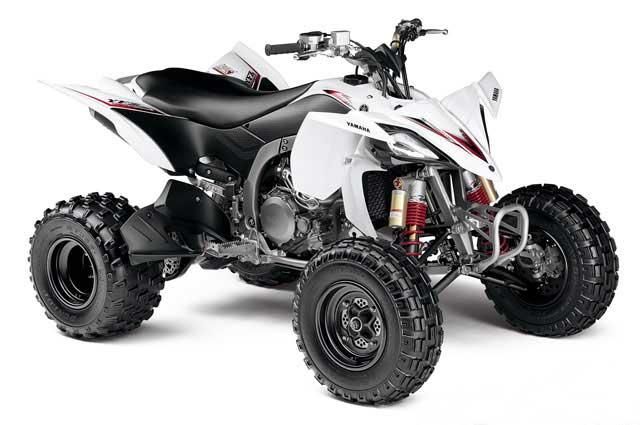 This expels all the burnt gasses through your exhaust pipe. (This is a simultaneous action with the intake stroke on a 2 stroke engine)
This expels all the burnt gasses through your exhaust pipe. (This is a simultaneous action with the intake stroke on a 2 stroke engine)
Each cycle turns the crankshaft which provides power to rotate the gears driving your ATV.
When it comes down to the two types of engines for ATVs, there are only two types that are installed (except battery powered which we won’t cover here) and they are 2 stroke and 4 stroke. They are both similar in the fact that they both have combustion engines which burn gasoline in order to provide the engine with combustion. How each of these produces their power is where the differences start to show.
The main difference between a 2 stroke engine and a 4stroke engine is in how each one produces its power.
In a 2 stroke engine the piston only take 2 strokes (see above) to complete its cycle of intake, compression, combustion and power, and exhaust. The intake and exhaust stroke both happen at the same time during the operation of a 2 stroke engine. This “return” stroke lets out the exhaust from the previous stroke and simultaneously brings in the air and fuel mix into the cylinder. Then the compression stroke then forces the fuel and air mix to upward to compress while the spark plugs initiate the spark to ignite the gasses inside, forcing the piston back down into the cylinder starting the whole process over again. The 4 cycles of a combustion engine are completed in just 2 strokes, hence the name. This means that the spark plug fires every single rotation which produces power each time. 2 strokes power cycle is completed in a much more abbreviated fashion which allows for smaller displacement engines to match the power output of a larger 4 stroke.
2 stroke engines are a bit different in the way their fuel is treated as well.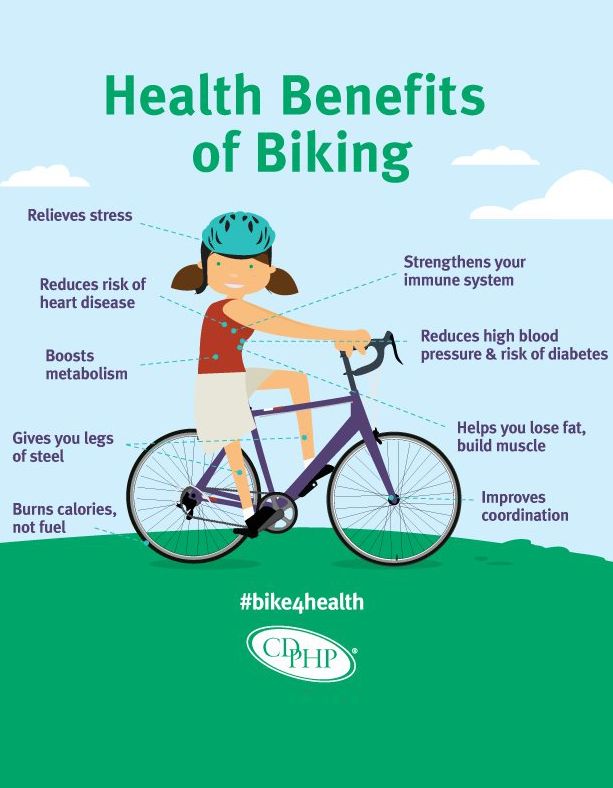 2 stroke engines require you to mix fuel and oil together in a precise mix in order to operate it. The fuel and oil mixture makes its way into the crankcase from the combustion chamber so there needs to be oil mixed in with the fuel so it can lubricate all the inner workings of the engine to prevent any problems.
2 stroke engines require you to mix fuel and oil together in a precise mix in order to operate it. The fuel and oil mixture makes its way into the crankcase from the combustion chamber so there needs to be oil mixed in with the fuel so it can lubricate all the inner workings of the engine to prevent any problems.
A 4 stroke engine, just as the name states, takes 4 strokes to complete the entire cycle from intak all the way through to exhaust. Each step of the cycle is one stroke so there is one stroke for intake, one for compression, one for combustion and power, and one for exhaust.
In a four-stroke, the fuel mixture never flows through the crankcase, so the oil and fuel are kept separate, and the oil does not burn like it does in a two stroke engine.
There are many pros and cons for each type of machine and it takes just a few minutes to go over what they are so when you get done with this article you should be able to determine what type of ATV you want to get.
So the advantages are something that a lot of riders harp on about 2 strokes and they always use these in their arguments. The pros for 2 strokes are definitely very nice when it comes down to the power they produce and how easy some things can be on them. Lets jump right in and take a look at the good and the bad.
The pros for 2 strokes are definitely very nice when it comes down to the power they produce and how easy some things can be on them. Lets jump right in and take a look at the good and the bad.
Because two stroke ATV engines are a much simpler design allowing them to do all four combustion cycles in 2 strokes they have less moving parts. Less parts makes your engine much more lightweight. Having a lightweight ATV can be a good thing for several reasons.
This allows 2 strokes to have faster acceleration and makes them more capable of decelerating faster. 2 strokes are generally smaller overall and this smaller frame also allows for a much better power to weight ratio and we all know that the more weight you have, the more you are slowed down. Every bit of weight reduction helps when it comes to riding an ATV and getting as much performance as you can, be it for racing or just general trail riding where you want to go as fast as possible.
A smaller engine allows for a much smaller and more lightweight ATV which is better for smaller riders. Not only is it good to pick the right ATV size for your kid, you need to pick the right size for you too. An ATV that is too big can become hard to handle and cause accidents. You want to size your ATV the same way you size your children’s ATV and you need to look for a lot of the same factors. Check out this article I wrote about choosing a youth ATV to get some ideas.
Not only is it good to pick the right ATV size for your kid, you need to pick the right size for you too. An ATV that is too big can become hard to handle and cause accidents. You want to size your ATV the same way you size your children’s ATV and you need to look for a lot of the same factors. Check out this article I wrote about choosing a youth ATV to get some ideas.
Although 2 stroke ATVs are no longer manufactured, when they were it was cheaper to buy one than it was to buy a 4 stroke. Less moving parts in the engine means less material used to construct the engine. And of course when there is less material used, the manufacturer spends less money and can give you a better price. Nowadays used 2 strokes are all you can find and they will be at a significantly reduced price than a new 4 stroke.
When you are in the market for a used 2 stroke you can bet that you will have a much cheaper initial cost that can help you in the long run when it comes to maintenance.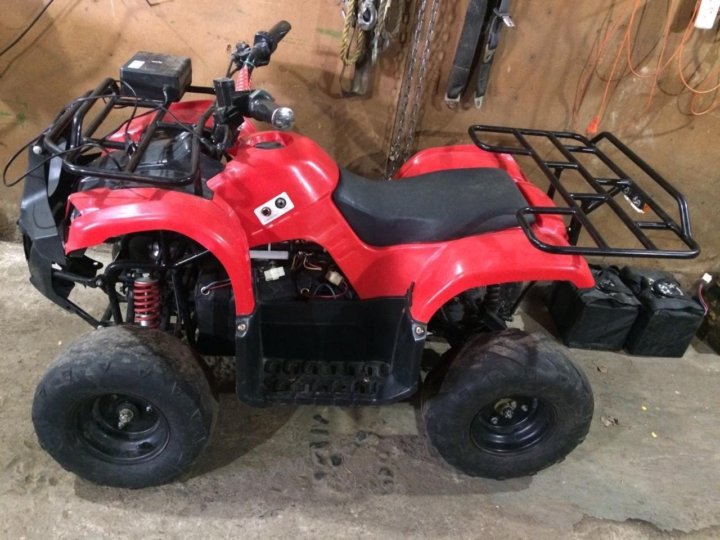 2 strokes are easier to maintain because of their simplicity and design that lets just about anyone with some mechanical inclination to fix most problems and perform their own maintenance.
2 strokes are easier to maintain because of their simplicity and design that lets just about anyone with some mechanical inclination to fix most problems and perform their own maintenance.
When you mix your oil and fuel together to get the ratio needed for running a 2 stroke you are lubricating your engine and crankcase. As you use up the fuel oil mixture, the oil is then burnt off and added new when a new tank of fuel oil mixture is added. This cycle will keep you from having to perform routine oil changes like you would in a 4 stroke.
I was doing oil changes in my Polaris Outlaw 525s 2 or more times a season because I was riding so much. This is a cost that can add up if you have to change your oil frequently so it is one more added cost that a 2 stroke doesn’t have.
With the reduced amount of parts in a 2 stroke engine, there is less that actually needs to maintain. As I already said, 2 strokes can be easier to maintain because of how simple the engines are. 2 strokes also do not have valves, but have ports instead. These transfer ports play a vital role in cooling the cylinder and scavenging gases.
2 strokes also do not have valves, but have ports instead. These transfer ports play a vital role in cooling the cylinder and scavenging gases.
Because of how a 2 stroke operates, firing at every single rotation, it fires much more often and produces more carbon which is released into the air. The EPA put stiff regulations on off road vehicles and 2 stroke engines emit well above the limit for this regulation. The Banshee was one of the last 2 stroke ATVs and it got hit very hard by these regulations. Any ATV is considered an off road vehicle and not one designed for closed courses so 2 strokes were affected by this regulation and are no longer being produced. If you want to learn more about the Yamaha Banshee, it’s production, and the EPA regulations then check out what I wrote about it in this article.
2 strokes also have a tendency to smoke a lot when they are first started up and all that is put into the air. Now does your one 2 stroke ATV make that big a difference? Probably not, but the EPA has still regulated them to the point that they are no longer manufactured by any ATV company.
Now does your one 2 stroke ATV make that big a difference? Probably not, but the EPA has still regulated them to the point that they are no longer manufactured by any ATV company.
Considering the fact that a 2 stroke engine is firing every rotation it is putting out exceptionally more power to the wheels and this makes inherently less predictable when giving the quad some throttle. While it has great power at high revolutions per minute (RPM) it is hard to control when there is something that can produce this much power.
2 strokes are often “squirrely” or “jumpy” and with the extra torque to the back wheels, can sometimes get away from you. It takes a more experienced rider to actually be able to control what a 2 stroke engine is putting out in terms of power and the ability to control it. Most of what entails how well an ATV rides is all in how well the rider handles it anyway.
Because a 2 stroke ATV engine operates on just two strokes to complete an engine cycle, it produces more power per stroke.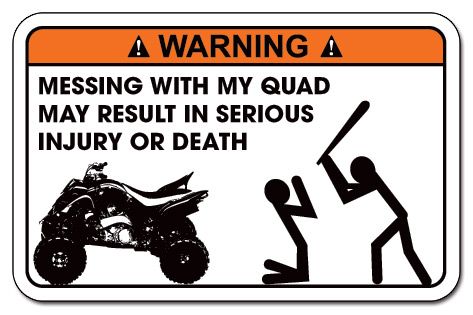 This provides great initial acceleration out of the gate and out of corners but it can have some not so great effects as well. For example, you can’t keep a 2 stroke in a gear for quite as long as with a 4 stroke and this means that you’ll be having to shift more often, as the threshold for variability in different gears is comparatively smaller with the two-stroke engine when compared to a dirt bike with a four-stroke engine.
This provides great initial acceleration out of the gate and out of corners but it can have some not so great effects as well. For example, you can’t keep a 2 stroke in a gear for quite as long as with a 4 stroke and this means that you’ll be having to shift more often, as the threshold for variability in different gears is comparatively smaller with the two-stroke engine when compared to a dirt bike with a four-stroke engine.
That being said, you can keep a 2 stroke throttle wide open and barely tap the clutch to power shift your way through the gears. The fact that you have all those strokes can make it so you really don’t need to shift sometimes, just nail it out of a turn where you already had it in a good gear. This is mostly for racing because you only want to be full throttle, or braking…never coasting in a race environment.
They are easy to maintain and they are cheaper to maintain and repair but that doesn’t mean you won’t be maintaining them any less. Because of the fact that you have your engine producing twice as many strokes, with less moving parts, your parts will wear out twice as fast. This means you will be doing maintenance more often so in the end it kind of becomes an even trade on maintenance costs between 2 and 4 strokes.
Because of the fact that you have your engine producing twice as many strokes, with less moving parts, your parts will wear out twice as fast. This means you will be doing maintenance more often so in the end it kind of becomes an even trade on maintenance costs between 2 and 4 strokes.
If you are riding a 2 stroke fairly hard, you will end up rebuilding your top end every 30 to 50 hours but if you are a do it yourself kind of person, with the right tools, the parts are not that expensive. It will just take some time to do the work.
4 strokes are generally easier to ride for most riders, even seasoned riders that love their 2 strokes. 2 strokes have great power and great torque that provides snappy acceleration, it can be harder to handle for inexperienced riders. This is a turn for some people because not everyone wants to just go as fast as possible or race their machines.
If you are looking for something that gets a little better gas mileage then a 4 stroke is what you need. It is performing less strokes because fuel is only consumed once per 4 strokes and putting off less combustion per cycle so it uses less fuel.
It is performing less strokes because fuel is only consumed once per 4 strokes and putting off less combustion per cycle so it uses less fuel.
When it comes to performance, fuel economy isn’t that big a deal when you are full throttle having fun out on the trails, but it is something to consider.
4 stroke engines are more reliable than comparable 2 strokes due to the power being available at lower RPMs. Since the 4 stroke engines power is more manageable at lower RPM, it makes it easier inside corners, ruts, and just about any hard packed dirt. Since the 4 stroke engine is only producing power on every second stroke of the piston, it allows the power to be much more manageable for the rider.
When you don’t have power to the wheels on every single stroke like a 2 stroke, you can alleviate wheel spin and save yourself precious time when on a race track. Does the decrease in raw power make up for the time saved in terrain like corners and ruts? That is a good question and is still part of the 2 stroke vs 4 stroke debate.
4 stroke engines have a lot more moving parts in their engines and have a lot more that is required to get them to run efficiently. With these extra parts comes a larger and heavier engine. To accommodate a larger engine, a larger or more sturdy frame is often needed to try to cope with the added weight. This makes for an overall heavier ATV…in fact, a 4 stroke engine is up to 50% heavier than a 2 stroke of comparable engine cc size.
Four-stroke engines are lubricated by holding oil in a sump pump. Oil is distributed from this sump pump through pressurized lubrication provided by the pump. This means that you will have to perform regular oil changes just like you would on an everyday passenger vehicle like your car. This is not like the 2 stroke where the oil is burned off every time it cranks the engine up. While this isn’t a huge cost, it does end up adding one maintenance cost that a 2 stroke does not have.
Considering the fact that 4 strokes have more parts, that means there are more things that can possibly break but when you consider that the engine in a 4 stroke is doing less overall work than a 2 stroke and the workload is spread over more parts, the maintenance repairs, and need to rebuild things like top end, are further apart in terms of when they need to be performed.
When it comes down to choosing a 2 stroke or 4 stroke ATV it is all about personal preference. The pros of a 2 stroke include: quicker acceleration, less weight than a 4 stroke, lower cost of maintenance and repair, and plenty of power to get the job done. If you don’t see yourself on an ATV that is harder to handle in tight courses then you will want a 4 stroke.
If you want more manageable power in almost all situations and prefer an easier ride at the cost of slightly more weight and cost of repairs, then a 4 stroke is for you..
Well the EPA passed some stiff regulations that basically put a halt to all 2 strokes being manufactured in the United States and companies were forced to stop producing them because they couldn’t get the emissions down on the 2 strokes. 2006 was the last time that the Yamaha Banshee was produced and it was the last 2 stroke ATV in production.
2006 was the last time that the Yamaha Banshee was produced and it was the last 2 stroke ATV in production.
I hope this has given you some insight on what the differences are and why you should, or shouldn’t get a 2 stroke vs a 4 stroke ATV. I have ridden both and in my opinion, both are just as fun as the other and at the end of the day, I am all about having fun out on the trails.
By Jeff Backer July 19, 2017
In the ATV world, there are two main types of engines used to supply power for the units. For the most part, two and four stroke engines are similar in that they both burn gasoline, and they both supply power to the wheels of the ATV. But it is how they produce this power where they differ from each other.
The main difference between a two-stroke engine and a four-stroke engine is in how each produces power. In a two stroke engine, the piston takes two strokes to complete one power cycle; whereas a four-stroke engine requires four strokes of the piston to complete one power cycle.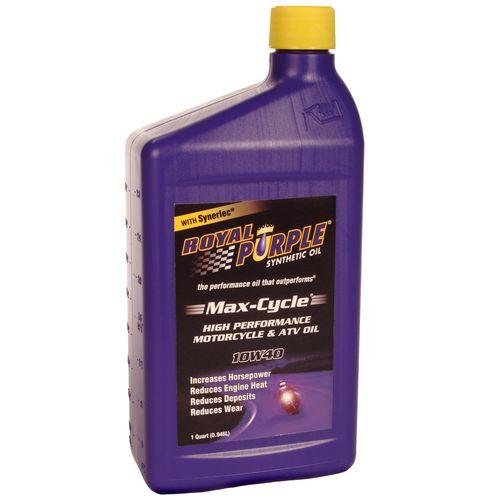 A stroke is defined as moving from top dead center (TDC) to bottom dead center (BDC) or vice versa. The goal of a power cycle is to compress and ignite the fuel mixture, and then expel the exhaust gases from the combustion chamber. A four-stroke engine accomplishes the power cycle through the intake stroke, compression stroke, power stroke and finally exhaust stroke. When the piston is at TDC, the intake valve opens and the fuel/air mixture is drawn in as the piston drops. At BDC, the intake valve closes and the piston returns to TDC, compressing the fuel/air mixture, which is ignited by the spark plug near TDC. The ensuing explosion forces the piston down. This is the power stroke which produces the engine's power and returns the piston back to BDC. Once there, the exhaust valve opens and the piston returns to TDC, forcing the spent exhaust gases out of the cylinder. Here, the exhaust valve closes and the cycle starts over.
A stroke is defined as moving from top dead center (TDC) to bottom dead center (BDC) or vice versa. The goal of a power cycle is to compress and ignite the fuel mixture, and then expel the exhaust gases from the combustion chamber. A four-stroke engine accomplishes the power cycle through the intake stroke, compression stroke, power stroke and finally exhaust stroke. When the piston is at TDC, the intake valve opens and the fuel/air mixture is drawn in as the piston drops. At BDC, the intake valve closes and the piston returns to TDC, compressing the fuel/air mixture, which is ignited by the spark plug near TDC. The ensuing explosion forces the piston down. This is the power stroke which produces the engine's power and returns the piston back to BDC. Once there, the exhaust valve opens and the piston returns to TDC, forcing the spent exhaust gases out of the cylinder. Here, the exhaust valve closes and the cycle starts over.
In a two-stroke engine, the power cycle is completed in a much more abbreviated fashion, allowing smaller displacement engines to match the power output of a larger four-stroke. The power cycle of a two stroke engine begins at BDC, where the rotating crankshaft forces the fuel/air mixture into the cylinder. The piston is then forced up, compressing the mixture where near TDC the spark plug ignites the mixture. This forces the piston down and is the power stroke of the engine. Once at BDC, a fresh dose of the fuel-air mixture is forced into the cylinder and the exhaust gasses are forced out, and the cycle begins again. Because the fuel mixture's path to the combustion chamber flows through the crankcase, the mixture needs oil to be mixed with it to lubricate the inner workings of the engine. In a four-stroke, the fuel mixture never flows through the crankcase, so the oil and fuel are kept separate, and the oil does not burn like it does in a two stroke engine.
The power cycle of a two stroke engine begins at BDC, where the rotating crankshaft forces the fuel/air mixture into the cylinder. The piston is then forced up, compressing the mixture where near TDC the spark plug ignites the mixture. This forces the piston down and is the power stroke of the engine. Once at BDC, a fresh dose of the fuel-air mixture is forced into the cylinder and the exhaust gasses are forced out, and the cycle begins again. Because the fuel mixture's path to the combustion chamber flows through the crankcase, the mixture needs oil to be mixed with it to lubricate the inner workings of the engine. In a four-stroke, the fuel mixture never flows through the crankcase, so the oil and fuel are kept separate, and the oil does not burn like it does in a two stroke engine.
There are benefits to both engine designs. The main benefits of two-strokers are that they have a higher power to displacement ratio. This, along with there being no oil reservoir, means that two-stroke engines are much lighter than comparable four-strokes; although the maximum power of a two-stroke is available at much higher RPMs (revolutions per minute) than for the comparable four-stroke. Also, two stroke engines have fewer moving parts, so they are easier for beginners to fix if something goes wrong.
Also, two stroke engines have fewer moving parts, so they are easier for beginners to fix if something goes wrong.
The main benefits to the four-stroke engine is they are more fuel efficient than the two-strokes and there is no mixing of fuel and oil. Also, four-stroke engines are more reliable than comparable two-strokes due largely in part to the power being available at lower RPMs. Four stroke engines are a much more user friendly engine as there is no calculating oil mixtures, just scheduled oil changes, the power delivery is more user friendly, and the engine is easier on your wallet as they are more fuel efficient.
Which engine is better: two-stroke or four-stroke? What is the difference and which one to choose?
We hope that after reading this article you will have fewer questions on this topic.
We absolutely believe that when it comes to motorcycles, one of the best tips on “what to choose” is: “The best equipment is the one you enjoy riding. ”
”
However, technical issues arise not just often, but very often. Let's look at the differences between the two types of engine from the perspective of the average rider, without getting too deep into details about power density and crankset.
Every gasoline engine has four main phases: intake, compression, combustion and exhaust. Without getting into a complicated technical explanation, the main difference between the two ATV and motorcycle engines is that the 2-stroke model performs these phases with two full revolutions of the crankshaft, while the 4-stroke requires four revolutions. For this reason, a four-stroke engine is more complex, more economical, and has cleaner emissions.
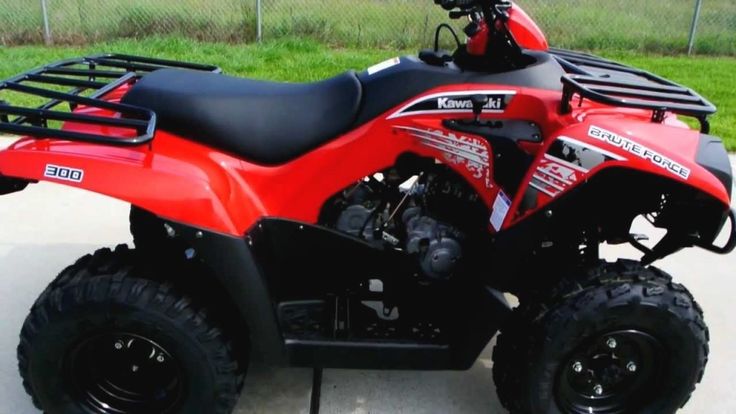
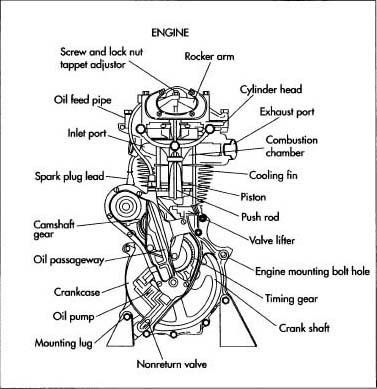
These are all the main factors regarding differences in motors that should be considered when deciding which motorcycle to buy. There is an opinion that a two-stroke model is best for sprints and short trips, and a four-stroke is best for longer trips on relatively flat trails.
In any case, we are sure that the whole family - both children and adults - can enjoy riding motorcycles or ATVs on rough terrain. It's better than sitting at home watching screens.
Our employees have all the necessary knowledge and skills, call us, write to us, come to us, ask questions and we will help you choose exactly what you need.
We wish you great trips!
Articles
19 Mar
ATVs can be equipped with two types of engines: electric and gasoline. Electric motors have less power and low energy storage. If you take the average ATV with an electric motor, the range will be about an hour of time, and then a long battery charge is required. In this regard, children's models of ATVs are equipped with this type of motor.
ATV Gasoline Engine
Gasoline engines are the most widely used in the ATV industry. They produce high power, which, together with the transmission, is converted into high torque. Thanks to this, ATVs feel so great on any off-road. Also an important indicator is specific power (power per unit mass). The low weight of the motor device paired with a good engine allows four-wheelers to show amazing cross-country ability.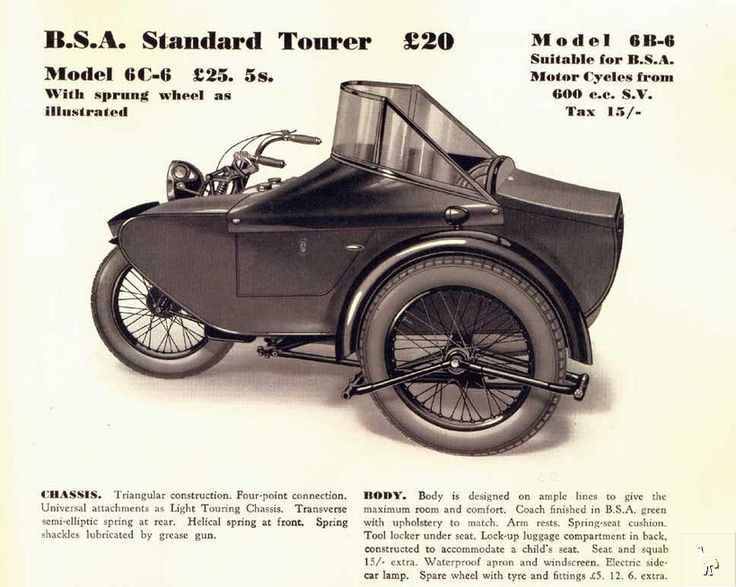 For ATVs, engines with a working volume of about 49- 900 cubes. Of course, there are smaller volumes that are designed for children's versions of devices.
For ATVs, engines with a working volume of about 49- 900 cubes. Of course, there are smaller volumes that are designed for children's versions of devices.
ATV Four-Stroke Engine
ATV gasoline engines can be divided into two large groups: two-stroke and four-stroke. The difference between these two types is that in a two-stroke engine, the piston completes one work cycle in one movement. In a four-stroke engine, injection, compression, detonation and exhaust are performed in two piston strokes. Based on this, we can say that a two-stroke engine produces more power with the same volume of cylinders. For example, one of the most common Stels ATV 300 ATVs is equipped with a four-stroke engine. Many people believe that oil must be added to the fuel of a two-stroke engine. However, this is not an entirely correct judgment, since there are many engines that do not require this, for example, Catarpillar engines do not require the presence of oil in gasoline.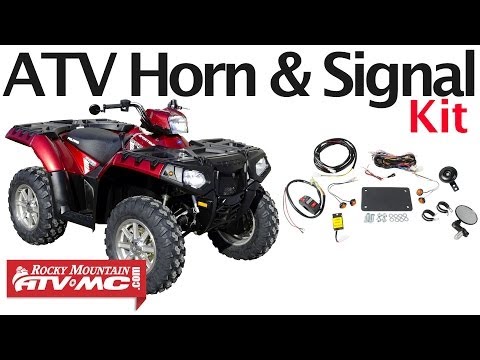 Of course, the talk that two-stroke engines produce more harmful substances is true, but it should be understood that this is due to the higher frequency of fuel combustion in the cylinder. It can be noted that today the technologies of mechanical engineering are so developed that the emissions of motors of different types differ little and are minimized.
Of course, the talk that two-stroke engines produce more harmful substances is true, but it should be understood that this is due to the higher frequency of fuel combustion in the cylinder. It can be noted that today the technologies of mechanical engineering are so developed that the emissions of motors of different types differ little and are minimized.
ATV Four-Stroke Engine Service
The performance of the power unit depends directly on the quality of service and frequency. Servicing of two-stroke engines is much more frequent compared to four-stroke ones. This is primarily due to the fact that more frequent combustion of the air-fuel mixture occurs in the cylinder. As a result, a higher engine operating temperature is achieved. Such factors lead to faster wear of the parts of the power unit operating on a two-stroke cycle.
ATV Engine Service
Therefore, when buying a 2-stroke ATV, be prepared for more frequent service and purchase of parts.